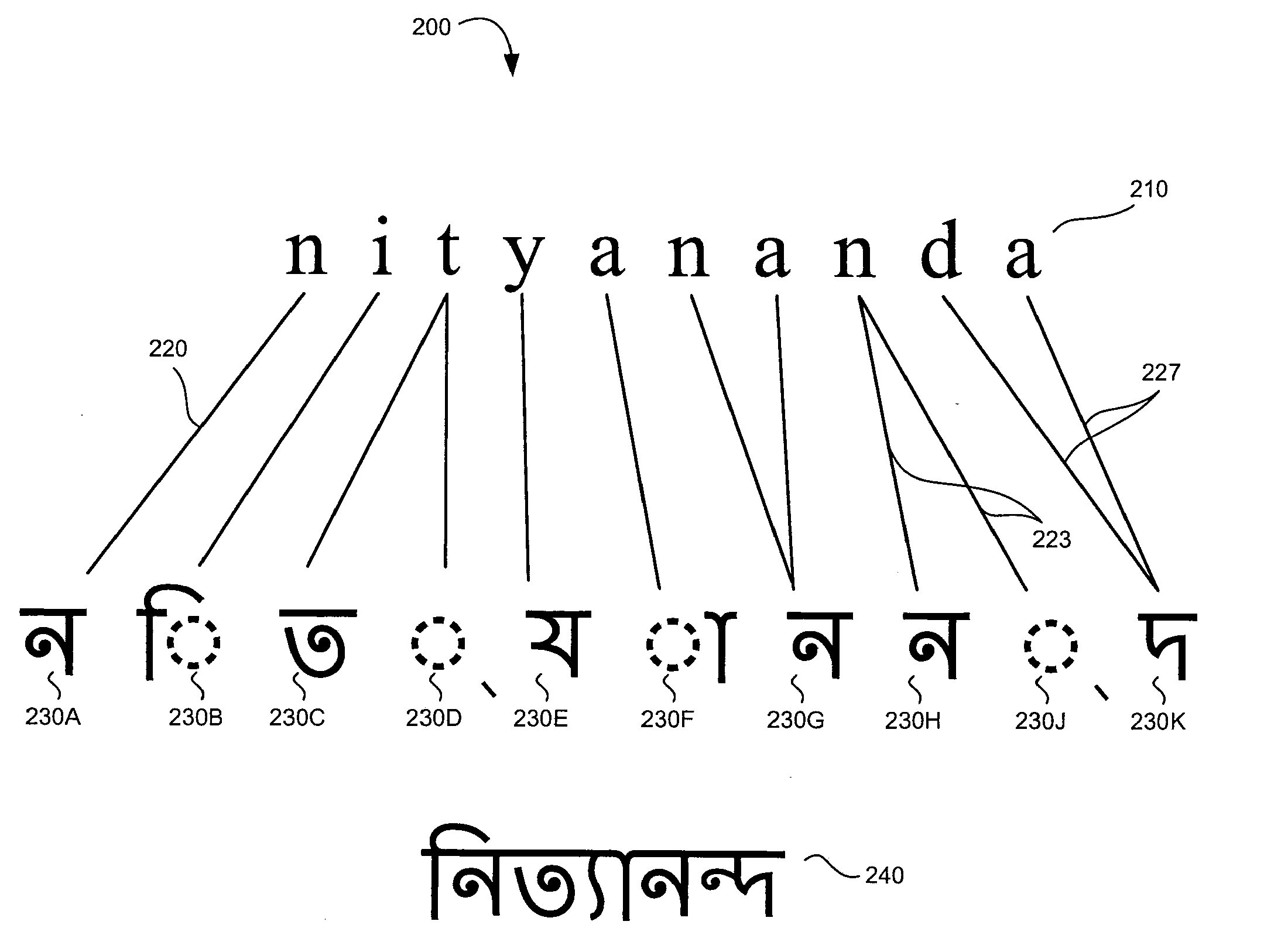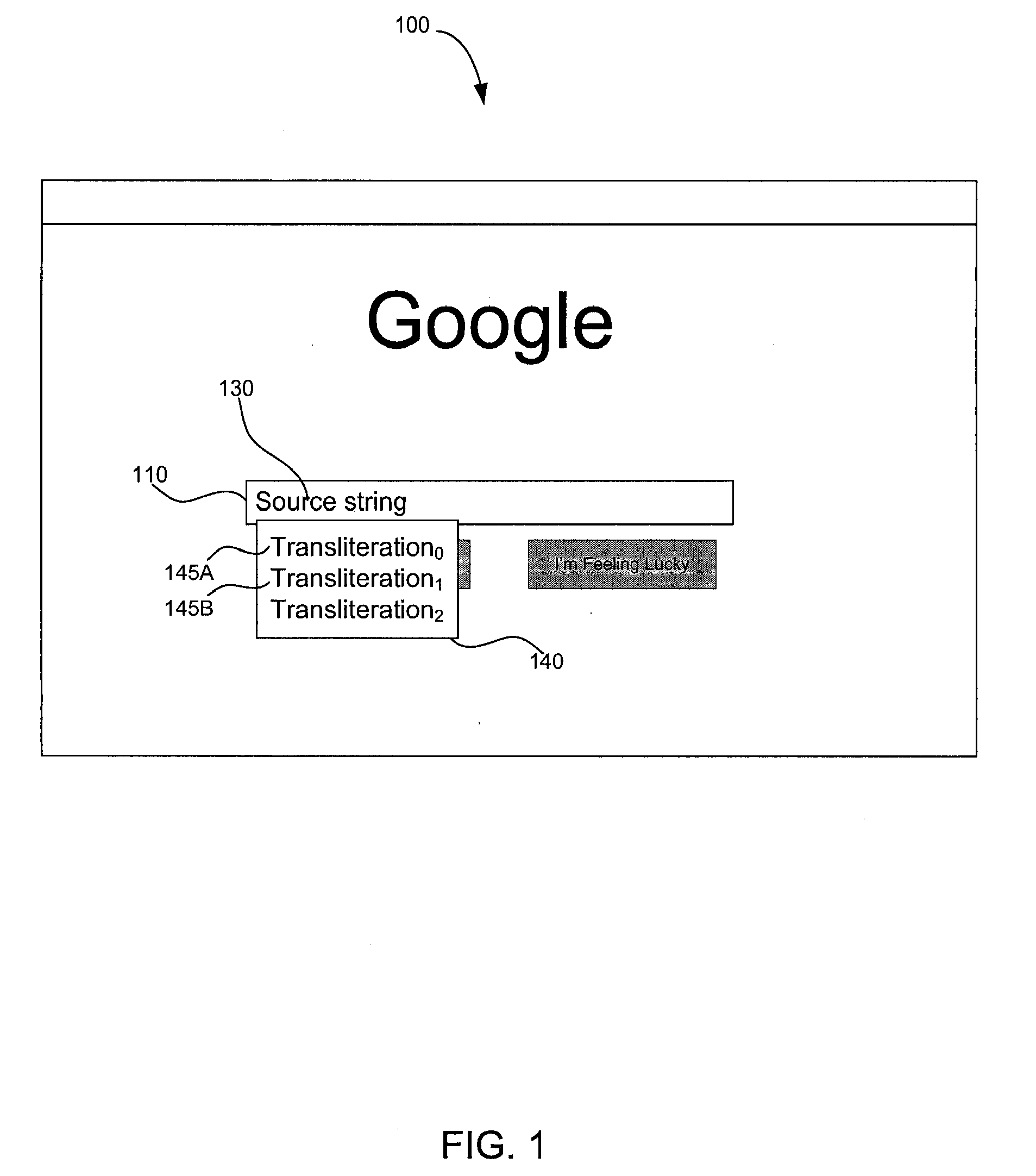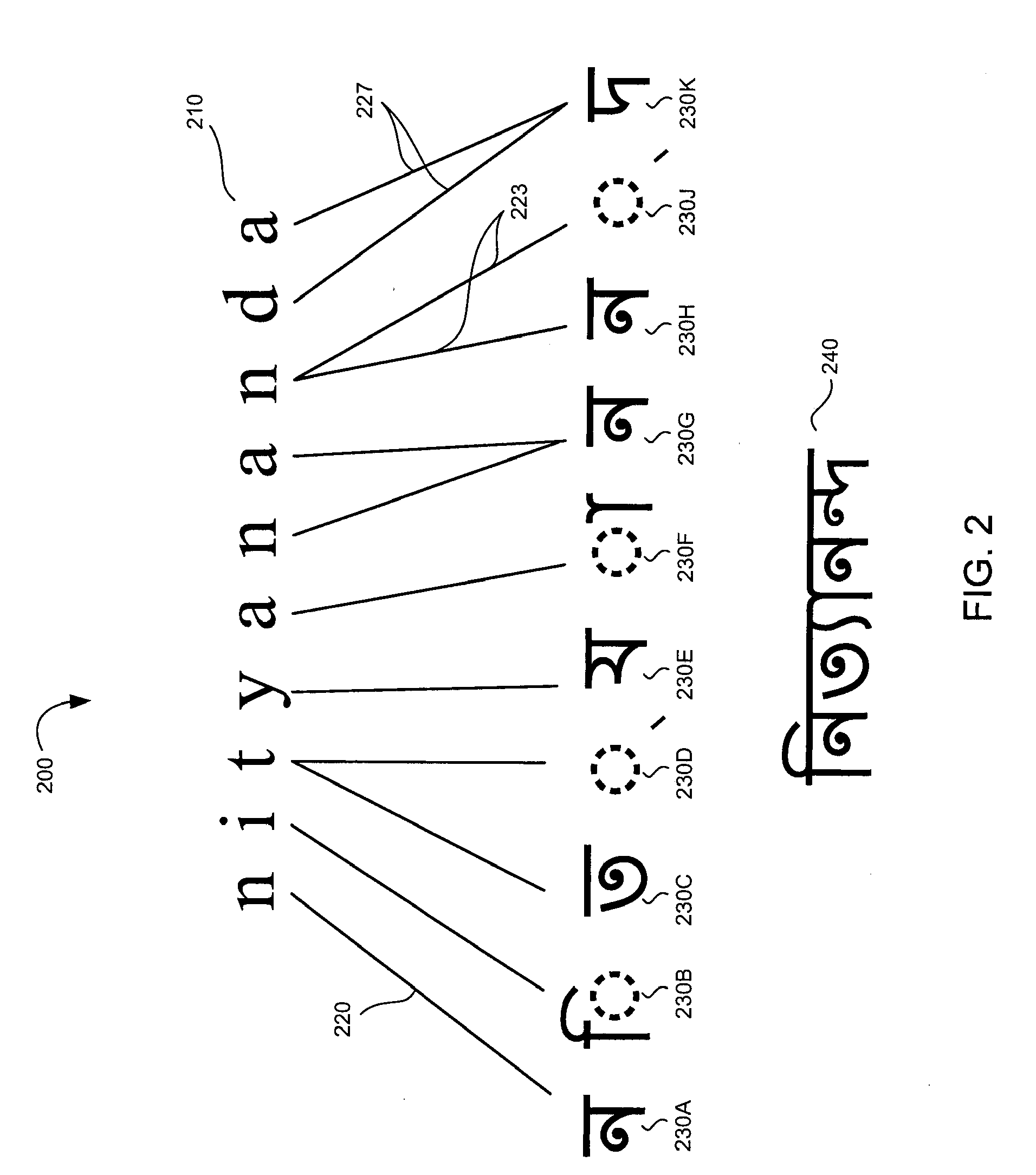Machine Learning For Transliteration
a technology of machine learning and transliteration, applied in the field of automatic transliteration of words, can solve the problems of user inability to use input devices, unable to produce characters of any particular alphabet, unable to achieve the effect of interactive transliteration,
- Summary
- Abstract
- Description
- Claims
- Application Information
AI Technical Summary
Benefits of technology
Problems solved by technology
Method used
Image
Examples
Embodiment Construction
[0036]As shown in FIG. 1, an exemplary graphical user interface 100 includes a text box 110 for receiving text-based user input. The graphical user interface 100 can be that of a web page rendered by a web browser 120 or, in other implementations, can be a part of a stand alone application. Textual user input (e.g., the text 130) can be received in the text box 110. The textual user input is provided in a particular input script (e.g., using the Latin alphabet). Generally text is provided by a user using an input device (e.g., a keyboard, a mouse, stylus, or microphone).
[0037]Exemplary user input 130 is shown displayed in the text box, representing text received from a user in a particular input script (e.g., Latin alphabet). The user interface also includes a selection list 140. The selection list includes one or more transliterations 145A, 145B. Each transliteration is a string that includes characters in a script other than the input script. The exemplary transliterations 145 are...
PUM
 Login to View More
Login to View More Abstract
Description
Claims
Application Information
 Login to View More
Login to View More - R&D
- Intellectual Property
- Life Sciences
- Materials
- Tech Scout
- Unparalleled Data Quality
- Higher Quality Content
- 60% Fewer Hallucinations
Browse by: Latest US Patents, China's latest patents, Technical Efficacy Thesaurus, Application Domain, Technology Topic, Popular Technical Reports.
© 2025 PatSnap. All rights reserved.Legal|Privacy policy|Modern Slavery Act Transparency Statement|Sitemap|About US| Contact US: help@patsnap.com



